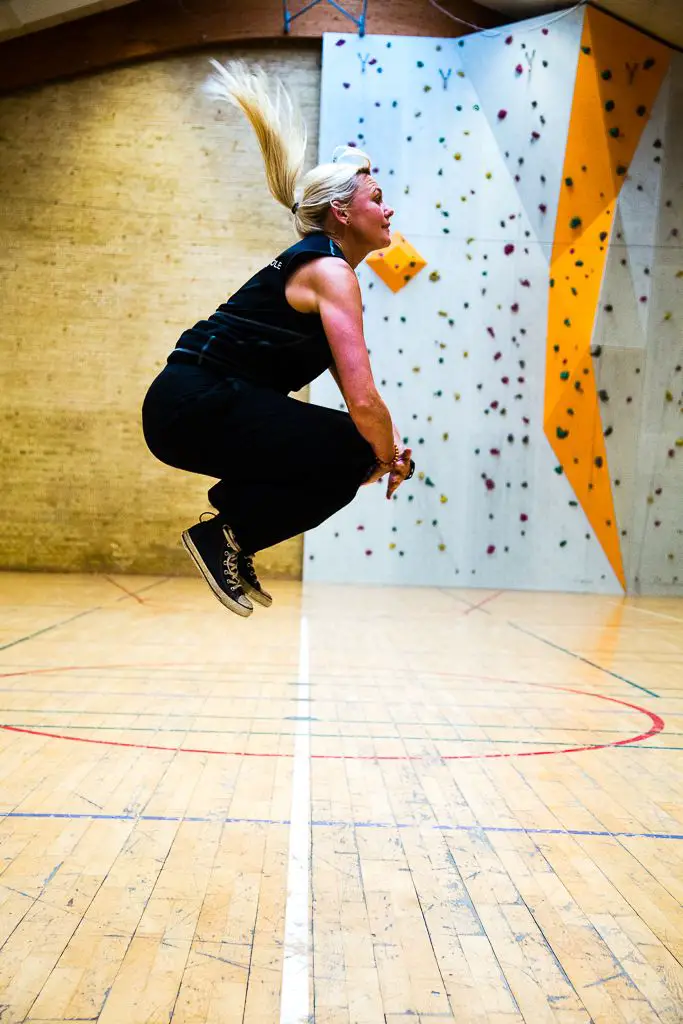

These findings are helpful to be able to determine high-risk landing mechanics and provide them with proper exercise prescription to make adjustments to their landing techniques. Men tend to demonstrate greater power, strength, and coordination through puberty, which better prepares them to handle the forces of deceleration during cutting, running, and jumping. Lastly, they demonstrate increased hip adduction angle during single-limb landing causing increased dynamic knee valgus. Women demonstrate increased dynamic knee valgus angles causing increased reliance on their ligaments for stability. They also have greater side-to-side differences in peak hamstring torque causing increased leg and quadriceps dominance. Women demonstrate decreased hamstring activation with increased quadriceps dominant patterns during landing causing stiffer landings. Neuromuscular control deficits appear to be predictive of ACL injury in athletes that present with high-risk landing techniques.

Although, the differences in force production, strength, and neuromuscular activation patterns that contribute to the increased injury risk in females. Hormonal changes still remain unclear as to how much they contribute to injury risk. However, static anatomical measures do not appear to correlate with increased injury risk. The anatomical or hormonal differences are the primary cause that increases the risk of ACL injury amongst the female population. Femalesįemales are more susceptible to non-contact ACL injuries compared to males. Pausing between jumps is evidence of poor coordination, eccentric control, and power.

Trunk dominance – when the thighs are not reaching parallel at peak of flight. Leg dominance – when the thighs are not equal (side to side) during flight, improper foot contact timing, or foot landing is not parallel (front to back). Quadriceps dominance – excessive landing contact noise, stiff knees, and poor shock absorption. Ligament dominant patients demonstrate dynamic knee valgus or foot placement that does not remain shoulder width apart. But, eventually these movement faults cause failure of tissue. These patterns are typically adopted to keep themselves on the field for as long as possible. Patients/athletes will utilize compensatory movement patterns to hide their deficiencies, placing them at increased risk of injury. Deficits in these areas will place increased loads on the ACL during competition. Muscular DeficitĮxamples of neuromuscular control deficits may include decreased muscle strength, power, or poor activation patterns. At Symmetry we can treat a variety of injuries virtually, including ACL injury. These are trainable qualities that help improve eccentric control and single limb stability. Strength, stability, balance, and coordination decrease the risk of non-contact ACL injuries. This can cause the ligaments to fail if your muscles are not strong enough to control these forces. As a result, these activities produce high-intensity loading to the tissues of the knee. ACL tears are non-contact injuries that are related to a deficit in eccentric control during cutting, running, or jumping. No triples.Įlement DD capped at 1.1/1.3/1.An ACL injury is a common experience that can be avoided through awareness. Other ages: Routine B + Vol (Max 1 body landing. There are no team or national finals for 7-8yrs NDP 5 Final: 4×1-leg alternate V-sit (2 left, 2 right)ĩ.
SL TUCK JUMPS DOWNLOAD
You can download a copy of the 2020 NDP 1-6 Routines here.ġ0. This year has seen minor changes to routines – notably 5B. The top finishers here go on to the National NDP Finals. For 2020 there are 2 ‘pre-qualification’ events (January and February) followed by a regional qualification competition (in March). A competition handbook is available to support the structure this gives more complete descriptions of the grades and events. British Gymnastics ‘National Development Plan’, continues to evolve and is the official competition pathway for trampolining in the UK, from club through to national levels.


 0 kommentar(er)
0 kommentar(er)
